Audience
This course is intended for students who want to learn Deep Learning using Python. Prior knowledge of Python programming is required.
$2,750.00
• Duration: 4 Days
• Mode of Delivery: Online -Instructor-led training
• Job role: Developer, M/L Specialist
• Preparation for exam: None
• Cost: USD$2,750.00
In this 4-day Python training course, students learn to program in Python. The course is aimed at students new to the language who may or may not have experience with other programming languages. This Python course is taught using Python 3.x.
20 in stock (can be backordered)
This course is intended for students who want to learn Deep Learning using Python. Prior knowledge of Python programming is required.
Before attending this course, students must have:
• Comfortable working in the Windows environment.
• Programming experience with Phython is required.
After completing this course, you should be able to:
• Understand how Python works and what it’s good for.
• Understand Python’s place in the world of programming languages.
• Work with and manipulate strings in Python.
• Perform math operations with Python.
• Work with Python sequences: lists, arrays, dictionaries, and sets.
• Collect user input and output results.
• Perform flow control processing in Python.
• Write to and read from files using Python.
• Write functions in Python.
• Handle exceptions in Python.
• Work with dates and times in Python
Module1: Building Blocks of Deep Learning
This module discusses the practical applications of deep learning. One such application includes a hands-on code demo you can run right away to recognize an image from the internet. Through practical exercises, you’ll also learn the key code implementations of TensorFlow that will help you build exciting neural network models.
• Introduction
• The Multi-Layer Perceptron
• Convolutional Neural Networks
• Recurrent Neural Networks
• Introduction to TensorFlow
• The reshape Function
• Optimizers
Module 2: Neural Networks
Here you will learn about the structure of artificial neural networks. Using TensorFlow 2.0, you will not only implement a neural network, but also train it. You will later build multiple deep neural networks with different configurations, thereby experiencing the neural network training process first-hand.
• Introduction
• Neural Networks and the Structure of Perceptrons
• Perceptrons in TensorFlow
• Training a Perceptron
• Multiclass Classifier
• Keras
• Exploring the Optimizers and Hyperparameters of Neural Networks
Module3: Image Classification with Convolutional Neural Networks (CNNs)
This module covers image processing, how it works, and how that knowledge can be applied to Convolutional Neural Networks (CNNs). Through practical exercises, you will create and train CNN models that can be used to recognize images of handwritten digits and even fruits. You’ll also learn some key concepts such as pooling layers, data augmentation, and transfer learning.
• Introduction
• Digital Images
• Image Processing
• Convolutional Neural Networks
• Pooling Layers
• Data Augmentation
• Saving and Restoring Models
• Transfer Learning
• Fine-Tuning
Module 4: Deep Learning for Text
This module introduces you to the world of Natural Language Processing. You will first perform text preprocessing, an important skill when dealing with raw text data. You will implement classical approaches to text representation, such as one-hot encoding and the TF-lDF approach. Later in the module, you will learn about embeddings, and use the Skip-gram and Continuous Bag of Words algorithms to generate your own word embeddings.
• Introduction
• Deep Learning for Natural Language Processing
• Getting Started with Text Data Handling
• Text Preprocessing
• Stemming and Lemmatization
• Classical Approaches to Text Representation
• Distributed Representation for Text
• Effect of Training Data
Module 5: Deep Learning for Sequences
This model shows you how to work on a classic sequence processing task—stock price prediction. You will first create a model based on Recurrent Neural Networks (RNNs), then implement a 1D convolutions-based model and compare its performance with that RNN model. You will combine both approaches by combining RNNs with 1D convolutions in a hybrid model.
• Introduction
• Working with Sequences
• Recurrent Neural Networks
Module 6: LSTMs, GRUs, and Advanced RNNs
This model reviews RNNs’ practical drawbacks and how Long Short-Term Memory (LSTM) models help overcome them. You will build a model that analyzes sentiments in movie reviews and study the inner workings of Gated Recurring Units (GRUs). Throughout the chapter, you will create models based on plain RNNs, LSTMs, and GRUs and, at the end of the module, compare their performance
• Introduction
• Long-Range Dependence/Influence
• The Vanishing Gradient Problem
• Sequence Models for Text Classification
• Loading Data
• Staging and Preprocessing Our Data
• The Embedding Layer
• Building the Plain RNN Model
• Making Predictions on Unseen Data
• LSTMs, GRUs, and Other Variants
• LSTM versus Plain RNNs
• Gated Recurrence Units
• LSTM versus GRU
• Bidirectional RNNs
• Classification Model
• Stacked RNNs
• Classification Model
Module7: Generative Adversarial Networks
This module introduces you to generative adversarial networks (GANs) and their basic components. Through practical exercises, you will use GANs to generate a distribution that mimics a data distribution produced by a sine function. You will also learn about deep convolutional GANs and implementing them.
• Introduction
• Key Components of Generative Adversarial Networks
• Problem Statement – Generating a Distribution Similar to a Given Mathematical Function
• Generating Real Data from the Known Function
• Creating a Basic Generative Network
• Discriminator Network
• Implementing the GAN
Click on the following link to see the current Course Schedule
Our minimum class-size is 3 for this course.
If there are no scheduled dates for this course, it can be customized to suit the time and skill needs of clients and it can be held online, at a rented location or at your premises.
Click on the following link below to arrange for a custom course: Enquire about a course date
Artificial intelligence is the branch of computer sciences that is used to perform complex tasks in a way that is similar to how humans solve speech recognition, problem-solving, learning and planning issues. Machine Learning is a subset of artificial intelligence that refers to the technologies and algorithms use to create smart intelligent machines to learn from data via supervised, unsupervised learning, and reinforcement learning without being programmed explicitly. Deep learning is a subset of machine learning that analyzes data in complex algorithms in the form of neural networks called Artificial Neural Networks (ANNs). This relationship is illustrated below.

Neural networks are not a new phenomenon. Neural networks were created in the first half of the 1940s and devoted significant resources to wait for the next 70 years. Artificial Neural Networks or ANN are different from traditional Compute Processing Architectures. In that, they’re designed to operate more like the human brain. The more flexible and better at handling unanticipated anomalies, and novelty is in a data.
Deep-learning uses layers of non-linear Processing Units for features extraction and transformation. Each successive layer uses the output from the previous layer as an input. The algorithms may be supervised or unsupervised and applications include pattern analysis, which is unsupervised, and classification which could be supervised or unsupervised.
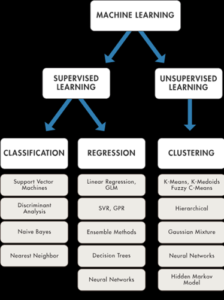
These algorithms are also based on the unsupervised learning of multiple levels of features or representations of the data. Higher-level features are derived from low-level features to form a hierarchical representation. Deep learning algorithms are part of a broader Machine Learning field of learning representations of data, and they learn multiple levels of representations that correspond to different levels of abstraction.
Where traditional Machine Learning focuses on feature engineering, Deep Learning focuses on end-to-end learning based on raw features. Each layer is responsible for analyzing additional complex features in the data.
A Neural network is a collection of simple trainable mathematical units that collectively learn complex functions. With enough training data, a Neural Network can perform a decent job of mapping input data and features to output decisions. It can consist of multiple layers where there is an input layer, some hidden layers, and an output layer.
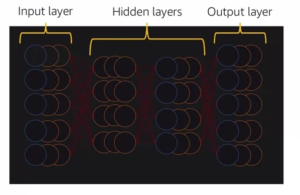
The basic unit of an Artificial Neural Network is Artificial Neuron sometimes also called a node. Like the biological neurons for which they are named, artificial neurons have several input channels. A neuron sums these inputs inside of processing stage, and produces one output that can fan out to multiple other artificial neurons. In this simplified example, the input values are multiplied by the weight to get their weighted value. Then if appropriate, the node adds an offset vector to the sum called the bias, which adjusts to sum to generate more accurate predictions, based on the success or failure of the product predictions. Once the inputs have been weighted then summed, and the bias is added if appropriate, the neuron activates if the final value produced by the preceding steps meets or exceeds the determined activation threshold. That’s called the activation step. It’s the final step before an output is delivered.
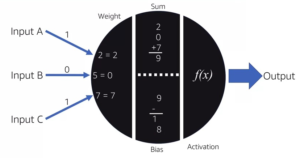
Use cases for Deep Learning span multiple industries. You can find text analysis use cases in finance, social, CRM, and insurance domains to name a few. It’s used to detect insider training. Check for regulatory compliance. Brand affinity. Sentiment analysis. Intent Analysis, and more by essentially analyzing blobs of text.
Deep Learning is also used to solve problems around time-series and predictive analysis. It’s using datacenters for Log Analysis and risk fraud detection, by the supply chain industry for resource planning, and in the IoT field for predictive analysis using sensor data. It’s also used in social media, and e-commerce for building recommendation engines. It uses sound analysis too.
You find Deep Learning being used in the security domain for voice recognition, voice analysis, and in the CRM domain for sentiment analysis.
You’ll also find deep learning in both the automotive and aviation industries, where it’s used for Engine and instrument floor detection. You’ll even find deep learning in the finance industry for credit card fraud detection among other things.
Finally, it’s used for image analysis. In the security domain, Deep Learning is used for things like facial recognition. In social media, it’s used for tagging and identifying people in pictures.
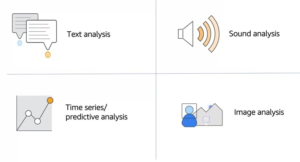
CERTFICATE OF COMPLETION: Participants will receive a certificate of completion at the end of a course. This is not an official certification for the product and/or software. Our courses do indicate the appropriate certification exam(s) that the participant can sit. Data Vision Systems does not provide certification or deliver the certification exams. Participants are responsible for arranging and paying for the certification exams on the appropriate certification body.
CANCELLATION POLICY: There is never a fee for cancelling seven business days before a class for any reason. Data Vision Systems reserves the right to cancel any course due to insufficient registration or other extenuating circumstances. Participants will be advised prior to doing so.
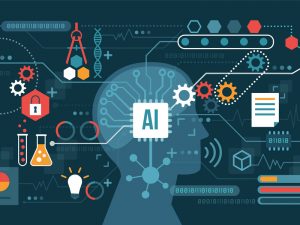
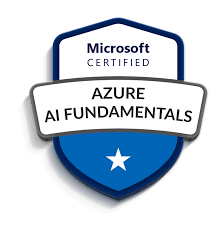
Reviews
There are no reviews yet.